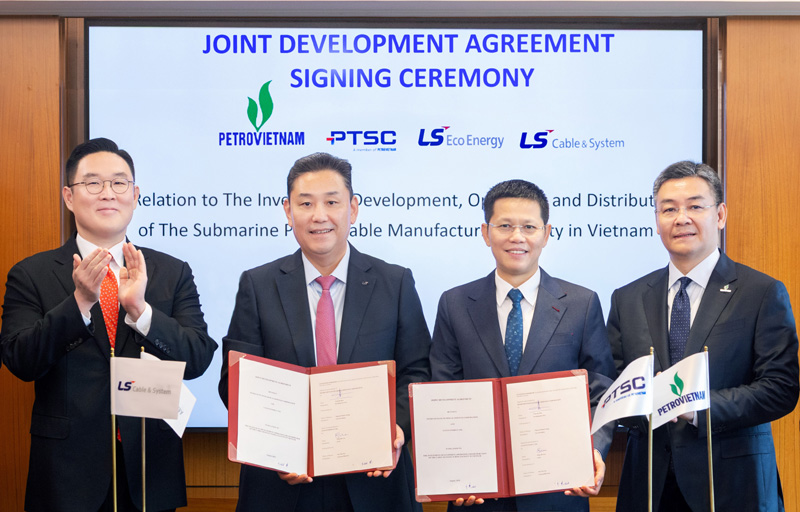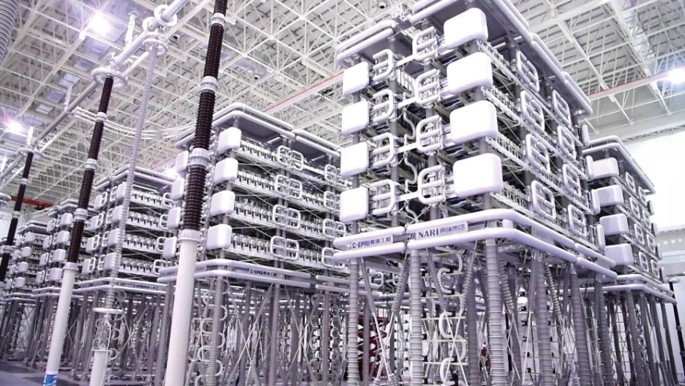DOE Withdraws $4.9 Billion Loan Backstop for Grain Belt Express
.png)
.png)
The U.S. Department of Energy abruptly terminated a $4.9 billion conditional loan guarantee for Invenergy's 800-mile, 600-kilovolt Grain Belt Express high-voltage direct current project on July 23, 2025. The decision ends federal financial backing only eight months after the Biden administration's Loan Programs Office offered the commitment under Title 17 of the Inflation Reduction Act. Invenergy says it will still pursue the project with private capital, but the delisting removes a cornerstone of its financing strategy and recasts federal priorities for large-scale transmission.
Next Steps and Future Milestones
Invenergy plans to present restructured financing to the Missouri Public Service Commission under a Certificate of Convenience and Necessity amendment docket during autumn 2025. The company targets financial close with private lenders in Q1 2026, followed by EPC mobilization and first foundation works in Kansas during Q2 2026 per existing Quanta and Kiewit contracts. Full energization of the multi-terminal HVDC corridor remains scheduled for 2029, subject to successful private financing and supply chain stability.
The project's ability to proceed without federal backing will serve as a critical test case for merchant transmission development in the post-loan guarantee environment. Success could demonstrate the viability of private financing for large-scale HVDC projects, while failure might confirm the necessity of federal support for interregional transmission infrastructure. The outcome will likely influence future policy discussions about the appropriate federal role in transmission development and the balance between public support and private investment in critical energy infrastructure.
Technical Profile and Project Scope
The Grain Belt Express is designed as a plus-or-minus 600-kilovolt, 5,000-megawatt bi-directional HVDC corridor linking Ford County, Kansas, to Sullivan County, Indiana, through converter stations near McPherson County, Kansas, Callaway County, Missouri, and Clark County, Illinois. Phase 1 spans Kansas to Missouri over 578 miles, carrying 2.5 gigawatts eastbound and 2.5 gigawatts westbound capability. The project would interconnect the Southwest Power Pool, Midcontinent Independent System Operator and Associated Electric Cooperative Inc. balancing areas, enabling controllable power exchanges and black-start functionality.
The 800-mile route utilizes voltage source converter technology with multi-terminal capability, featuring approximately 3% end-to-end losses according to Invenergy estimates. The project targets full commercial operation by 2029, with Phase 1 construction originally scheduled to begin in 2026. The line would deliver electricity from western Kansas wind farms across Missouri and Illinois to the PJM Interconnection in Indiana, connecting to the power grid serving the eastern United States with capacity to transmit up to 5,000 megawatts of electricity.
Industry Reaction and Stakeholder Responses
Invenergy responded that a "privately financed Grain Belt Express transmission superhighway will advance President Trump's agenda of American energy and technology dominance while delivering billions of dollars in energy cost savings, strengthening grid reliability and resiliency, and creating thousands of American jobs." Despite the federal setback, the company confirmed it will pursue private finance paths while maintaining its 2026 EPC mobilization goal. Invenergy had already awarded $1.7 billion in EPC contracts to Quanta Services and Kiewit Energy Group, emphasizing its commitment to domestic job creation and supply chain resilience.
Jigar Shah, former LPO director under Biden, called the termination "illegal" and a breach of conditional-commitment contract. Environmental groups criticized the decision, with Sierra Club warning the cancellation "jeopardizes 2.5 gigawatts of low-cost wind for Missouri." Conversely, Missouri agricultural groups applauded the move, with Missouri Cattlemen's Association supporting the decision over land-use concerns. The Missouri Farm Bureau president called it "a long-overdue recognition of the voices of rural communities who have consistently and clearly expressed their deep concerns about the project's impact on their land, livelihoods and private property rights."
Political Pressures Drive Federal Reversal
The DOE's withdrawal represents a high-profile federal reversal that jolts the U.S. long-distance transmission build-out amid mounting political pressure from Missouri Republicans. Senator Josh Hawley labeled the guarantee a "Green New Deal boondoggle" and framed eminent-domain takings as misuse of federal power. Missouri Attorney General Andrew Bailey threatened litigation, asserting the project "never benefited Missouri ratepayers." DOE Secretary Chris Wright linked the cancellation to a department-wide portfolio scrub of $100 billion in pre-Trump commitments. The termination signals that political opposition leveraging eminent-domain optics can derail loan guarantees even after multi-state regulatory approvals.
Hawley secured a pledge from Trump-era leadership to cancel the loan guarantee after sustained pressure campaigns. Bailey launched investigations into the project, citing concerns over what he characterized as misleading claims and potential fraud. The Missouri Attorney General issued a Civil Investigative Demand compelling GBE to provide documents related to job creation promises, marketing, and landowner outreach. This political backdrop demonstrates how localized opposition can influence national infrastructure priorities, particularly when projects involve contentious land acquisition through eminent domain.
Federal Financing Chronology and Conditional Commitment Mechanics
The Biden administration's Loan Programs Office issued the conditional commitment up to $4.9 billion on November 25, 2024, which would have anchored a blended debt stack at secured overnight financing rate plus 37.5 basis points. The federal guarantee represented a legally binding agreement stipulating precedent conditions while obligating DOE to close if those conditions were met. Career attorneys inside LPO advised against cancellation, warning of potential contract breach and exposure to claims under the Administrative Procedure Act. The decision was made against the recommendation of career staff who worked on the deal and without their involvement.
Conditional commitments under Title 17 are enforceable agreements that reduce risk for private lenders without requiring direct federal payments unless projects fail. The guarantee would have provided access to lower-cost debt financing, typically enabling borrowing at rates significantly below what merchant transmission developers face in private markets. DOE's assertion that "conditions necessary to issue the guarantee are unlikely to be met" came despite Grain Belt Express retaining a four-month window to reach financial close under the original term sheet.
Legal and Contractual Implications
The withdrawal raises significant legal questions about DOE's authority to rescind conditional commitments after execution. Conditional commitments are legally binding agreements that obligate the federal government to close loans when specific conditions are met. Career DOE attorneys warned that cancellation could constitute contract breach, potentially exposing the agency to claims under the Administrative Procedure Act. Legal experts suggest the decision may face court challenges, particularly given that Grain Belt Express had completed two years of due diligence with LPO and maintained a clear path to financial close.
The cancellation establishes a concerning precedent for federal loan programs, demonstrating vulnerability to political interference that could deter future applicants. Projects enrolled under FAST-41 to streamline federal permitting may reconsider their participation if loan guarantees can be arbitrarily revoked. The episode underscores that conditional commitments, despite their legal framework, remain subject to administrative discretion during political transitions.
Alternative Financing Pathways and Market Impact
Without federal backing, merchant HVDC developers face higher-cost debt, potentially widening the weighted-average cost of capital by 75 to 125 basis points according to industry bankers. Invenergy signaled it will pursue a hybrid structure blending bank debt with up to $2 billion in mezzanine notes, maintaining 65% leverage on a forecast $7 billion Phase 1 capital expenditure budget. Alternative financing options include club bank loan tranches at secured overnight financing rate plus 200 basis points, private placement notes through insurance investors, strategic off-take equity sales, and green bonds under 144A frameworks.
HVDC experts anticipate a "two-tier market" emerging where projects with regulated cost recovery or contracted offtake retain access to sub-5% debt, while merchant lines reliant on market-arbitrage revenues face double-digit equity internal rates of return and shrinking debt appetite. The loss of federal backing compounds financing challenges at a time when the U.S. needs to triple existing transmission capacity by 2050, with national infrastructure investment requirements reaching more than $40 billion annually by 2031.
Broader Policy Context and Energy Transition Implications
The Grain Belt Express cancellation coincides with the Trump administration's broader retrenchment from Inflation Reduction Act programs, including proposed rescission of $15.2 billion in clean energy earmarks from the Infrastructure Investment and Jobs Act. The administration has implemented sweeping regulatory rollbacks targeting renewable energy projects while prioritizing fossil fuel development through executive orders declaring a national energy emergency. Energy Secretary Chris Wright emphasized the department's "lower risk tolerance in lending practices and an uncompromising focus on expanding access to affordable, reliable and secure energy."
This policy shift reflects a fundamental reorientation of federal energy priorities away from renewable energy infrastructure toward traditional fossil fuel development. The administration's "America First" energy agenda emphasizes deregulation, expanding oil and natural gas production, and incentivizing domestic energy sector investment. Trump's executive orders have withdrawn offshore areas from wind leasing, lifted restrictions on Alaska oil and gas development, and directed agencies to streamline fossil fuel permitting while creating barriers for renewable projects.
Economic and Market Confidence Ramifications
The sudden withdrawal erodes market confidence in the United States as a reliable partner for clean energy investment, potentially deterring foreign capital that has been instrumental in financing large-scale infrastructure projects. Global competitors in Europe and China are aggressively expanding renewable energy grids with stable policy frameworks while the United States appears to be retreating from clean energy commitments. This instability could particularly impact smaller developers who lack the financial resources to navigate uncertain federal policy landscapes without loan guarantee support.
The cancellation highlights the vulnerability of federal financing programs to political interference, creating a fragmented landscape where projects succeed or fail based on regional politics rather than technical merit. Market analysts warn that the precedent set by the Grain Belt Express withdrawal could chill applications for similar federal support, potentially stalling the deployment of critical transmission infrastructure needed to support grid modernization and reliability.
Regional Economic Development and Job Creation Impacts
The project promised significant economic benefits including an estimated 4,000 construction jobs over three to four years, continuing property tax revenues for local jurisdictions, and projected consumer savings of $52 billion over 15 years through enhanced market efficiencies. Missouri regulators had approved increased delivery capacity from 500 megawatts to 2,500 megawatts, with company estimates suggesting $7.5 billion in energy cost savings for Missouri and Illinois residents over 15 years. The loss of federal backing threatens these economic development prospects while maintaining the controversial aspects of eminent domain land acquisition.
Local opposition centered on concerns about private property rights and the use of eminent domain to acquire farmland, with nearly 40 eminent domain actions initiated against Missouri landowners. Agricultural organizations argued the project offered little direct benefit to Missouri while imposing costs on rural communities through land acquisition processes. The tension between national infrastructure needs and local property rights exemplifies broader challenges facing large-scale transmission development across the United States.
Implications for United States HVDC Build-Out and Grid Modernization
The withdrawal creates a credit supply shock that could significantly impact future HVDC development by removing a key federal financing tool that had been expected to catalyze private investment in transmission infrastructure. Without loan guarantees, developers face higher borrowing costs and increased difficulty securing private financing for multi-billion-dollar projects that require long-term capital commitments. This financing gap could delay critical transmission projects needed to integrate renewable energy resources and enhance grid reliability.
The DOE's 2023 National Transmission Needs Study called for up to 1,000% expansion of Southwest Power Pool to Midcontinent ISO interface capacity by 2035. Losing 5,000 megawatts of controllable capacity from the Grain Belt Express compounds that shortfall while demonstrating the vulnerability of transmission development to political opposition. The precedent suggests that future interregional projects may face similar challenges, potentially slowing the grid modernization necessary to support growing electricity demand from data centers, artificial intelligence applications, and electrification initiatives.








